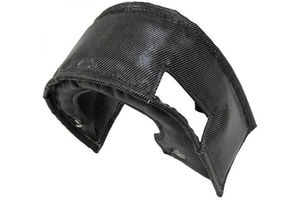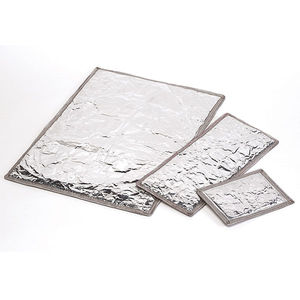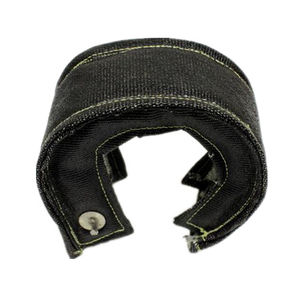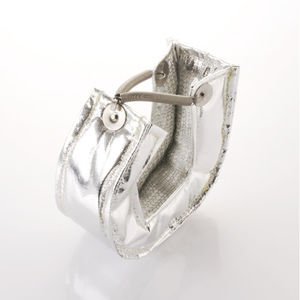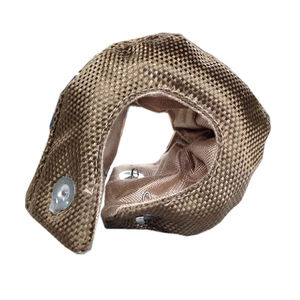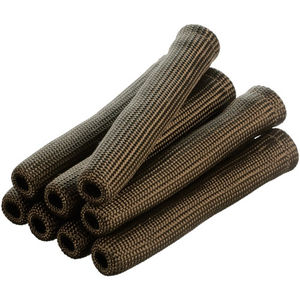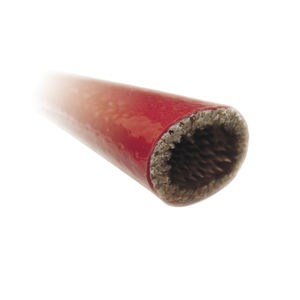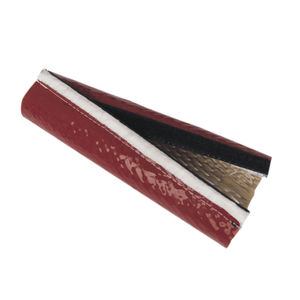
- Electricity - Electronics
- Cable, Connector, Enclosure
- Protection sleeve
- Ningguo BST Thermal Products Co.,Ltd
Protection sleeve braidedfor hosessilicone


Add to favorites
Compare this product
Characteristics
- Type
- protection
- Structure
- braided
- Applications
- for hoses
- Material
- silicone
- Protection level
- flame-retardant
Description
500°F/260°C Continuous Exposure: Higher Intermittent
Silicone coated fiberglass high-temperature Fireproof Sleeve
Silicone coated fiberglass Fire Sleeve is designed to protect hoses,wires and cables from the hazards of high heat and occasional flame.
high-temperature Fireproof Sleeve protects continuously to 260°C/500°F and will withstand a molten splash at 1200°C/2200°F. Made of braided fiberglass yarns in a flexible substrate,it is then coated with a high grade silicone rubber.
Resistant to hydraulic fluids, Lubricating oils,and fuels, Silicone Sleeve insulates against energy loss in piping and hosing;protects employees from burns;and allows bunding of wires,hoses,and cables.
Silicone coated fiberglass Fire Sleeve is the perfect cover to protect hydraulic hoses,pneumatic lines and wiring bundles.
Silicone coated fiberglass Fire Sleeve can withstand repeated exposures to molten steel, molten aluminum and molten glass up to 3000°F (1650°C).
Always wear safety glasses, dust mask, gloves and long sleeves are recommended when handling this product
Proudly Made By BST Thermal Protection Products Co.,Ltd
Silicone coated fiberglass Fire Sleeve - Quick Facts
Custom colors available by special order.
Continuous operating temp:
500°F (260°C)
Max short term exposure:
3000°F (1650°C)
Molten splash resistance:
Outstanding
Flame resistance:
Very good
VIDEO
Catalogs
No catalogs are available for this product.
See all of Ningguo BST Thermal Products Co.,Ltd‘s catalogsExhibitions
Meet this supplier at the following exhibition(s):
Other Ningguo BST Thermal Products Co.,Ltd products
Other fireproof materials products
Related Searches
- Adhesive tape
- Cable conduit
- Protection conduit
- Plastic conduit
- Tubular conduit
- Flexible conduit
- Collar clamp
- Electrical cable conduit
- Fire-resistant conduit
- Braided conduit
- Wire sleeve
- Heat-shrinkable conduit
- Stainless steel hose clamp
- Pipe conduit
- Black conduit
- Insulating adhesive tape
- Worm-drive hose clamp
- Insulating conduit
- Corrugated conduit
- Abrasion-resistant conduit
*Prices are pre-tax. They exclude delivery charges and customs duties and do not include additional charges for installation or activation options. Prices are indicative only and may vary by country, with changes to the cost of raw materials and exchange rates.


